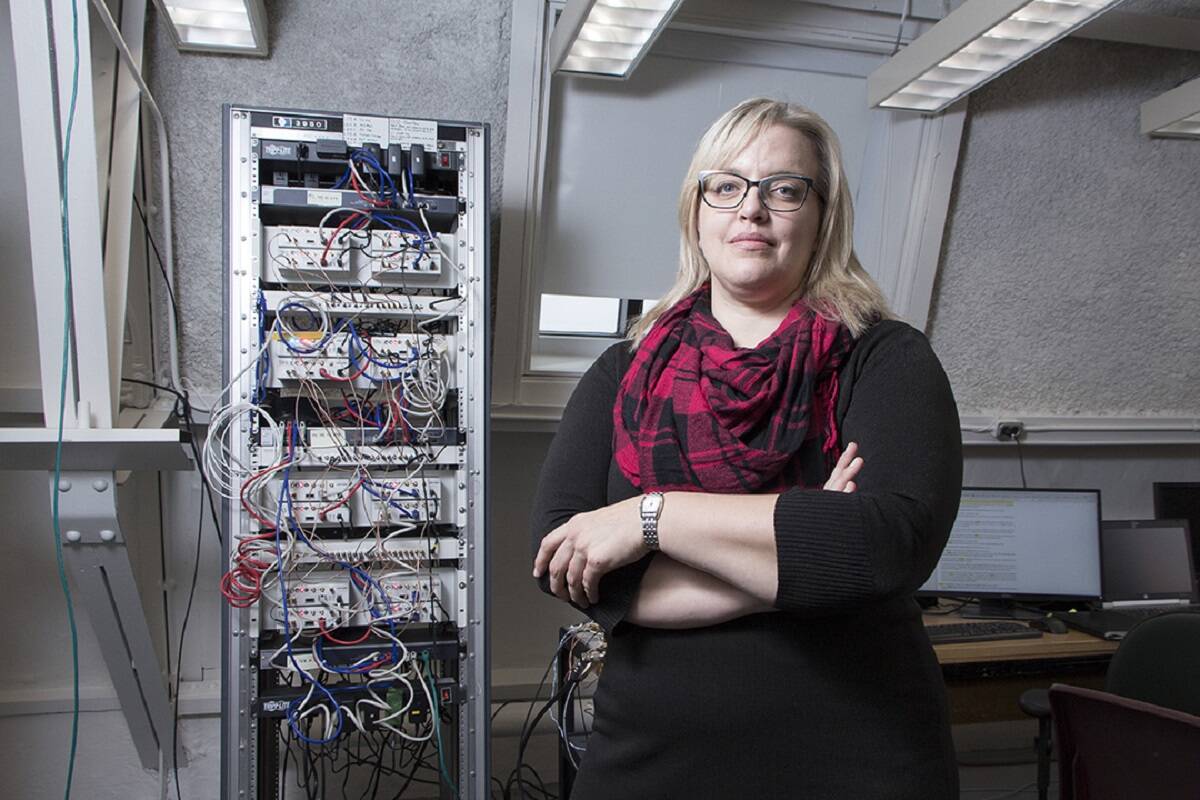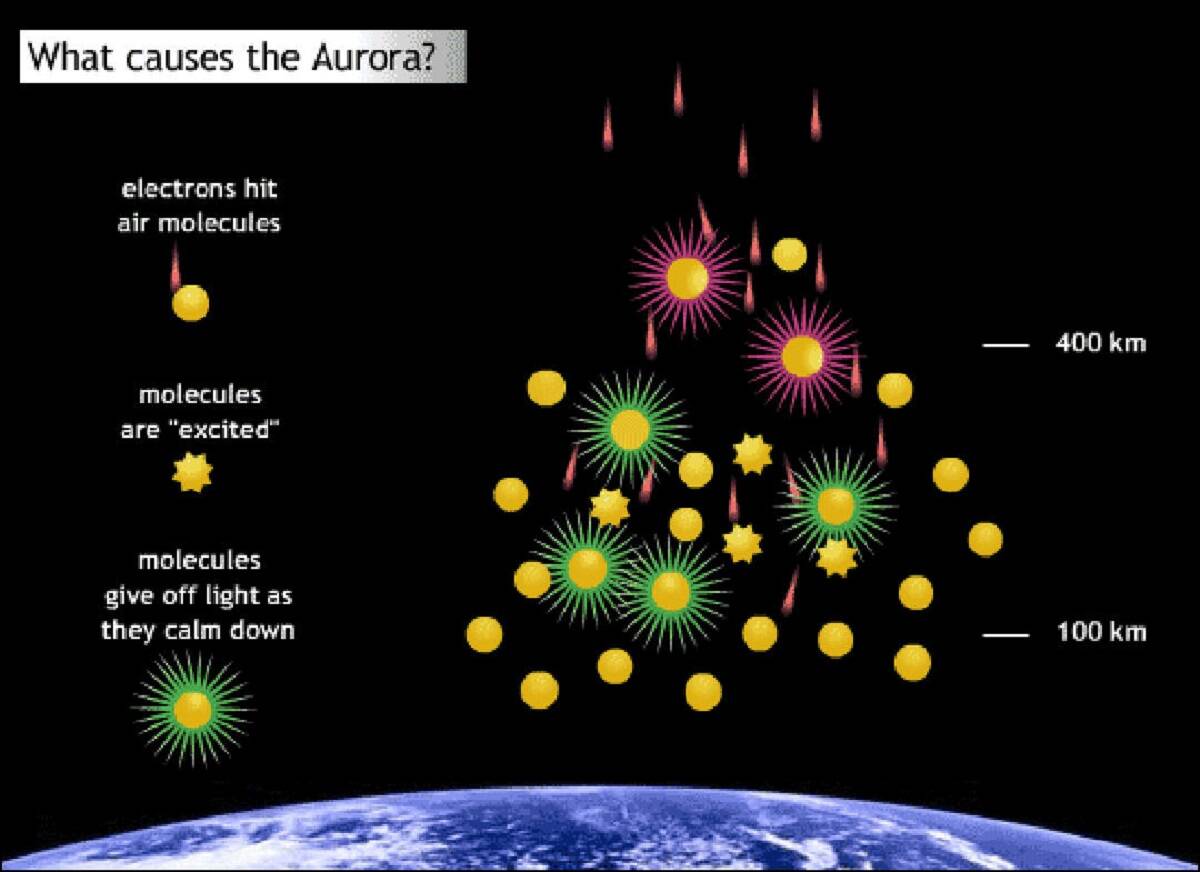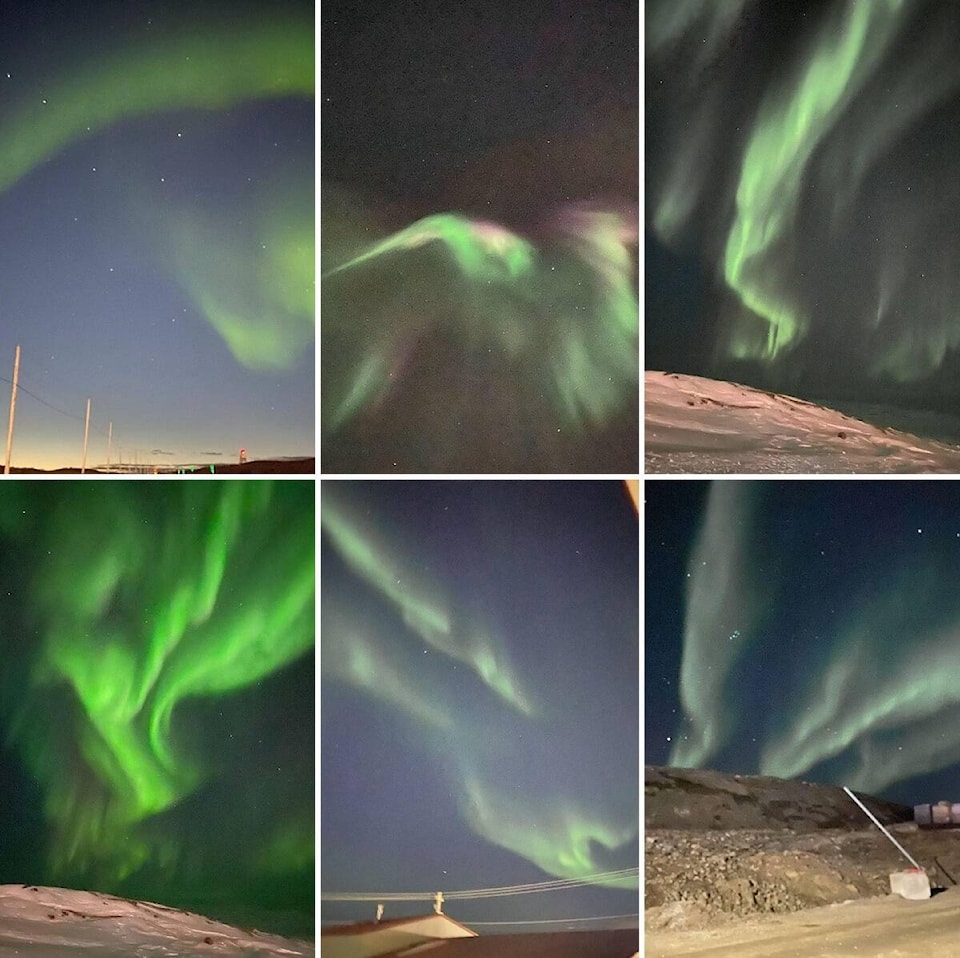Northern lights have been appearing frequently and vividly over the past few months.
Nunavummiut in some communities have been saying that the aurora has been visible almost every night for several weeks.
In an interview with Nunavut News, Dr. Kathryn McWilliams, a professor in the Department of Physics and Engineering Physics at the University of Saskatchewan, explained the origins of Northern lights. The phenomenon starts with solar winds, which charge particles in our atmosphere.
“Electrons from the solar winds hit air molecules in the Earth’s atmosphere. These molecules get ‘excited’ and then release light as they calm down,” says McWilliams, the first Canadian to ever be awarded an honorary fellowship from the Royal Astronomical Society (RAS) of the United Kingdom.
Northern lights present a variety of colours, usually green, red and purple. The Canadian scientist explains that each colour is created from a different particle in the atmosphere.
“Different particles emit different lights when they are excited. The green auroras are a result of atomic oxygen being excited between 200 and 100 km above the cloud cover. Red auroras are less common and are a result of atomic oxygen being excited at higher altitudes (between 200 km and 250 km above cloud cover). Purple/blue auroras are emitted when molecular and ionized nitrogen, which occurs at lower altitudes, between 80 and 100 km above cloud cover, are excited,” explains McWilliams.
As for the frequency of the Northern lights, they follow a cycle which repeats every 11 years. The cycles are based on solar winds intensity and were at a peak in 2014. The Northern lights were in the more inactive stage of the cycle for the last few years but are now increasing again.
Although the U.S.-based Space Weather Prediction Center shows the next peak in the night sky phenomenon is supposed to take place in 2025, the values experienced in the last few months are already as high/frequent as they are predicted at the peak.
“We might see the predictions change increasingly soon. What is for sure is that we can still expect an increase in Northern lights sightings over the next few years,” McWilliams says.
Photographing the lights
David Kilabuk, an avid photographer from Pangnirtung, offered some pointers for those interested in capturing the Northern lights through their lenses.
“I began my interest in photographing the Northern Lights back in 2008 when I got my Nikon D300, which had the capability to capture lights properly, but it was still a learning process,” he recalls. “Pretty much everything I know has been from reading about photography and learning from my mistakes.”
He started out taking aurora pictures using his camera’s automatic mode and then varying the shutter speed, ISO and aperture. That alters the images look and “mood,” he says.
Although Kilabuk has ventured out with friends to shoot the Northern lights on occasion, he often goes alone, which means being vulnerable to the elements and wildlife.
“We have an area called The End of the Road. I like going there as it is dark, but one time a polar bear was killed right in the same area,” he says. “I have also seen a polar bear on that road. One strange encounter I had when I was taking Northern light photos involved a fox. I usually try to stay as still as I can be while taking photos. I heard something behind me and I did not move at all. It was a fox that decided to walk right past me. It was so close that I could have kicked it but it did not seem to notice me at all. It just kept going towards the dump.”
As for the best tool to do the job, Kilabuk is partial to Nikon digital cameras and he’s also moved to a mirrorless model, which is silent — no clicking of a shutter.
“My advice now would be (to) get a camera that will cater to your advancement as your skills improve,” he recommends. “There is nothing worse when you want to do something but your camera does not have the capability to do it.”


